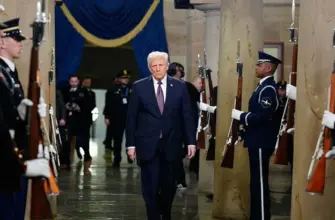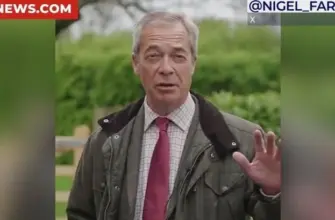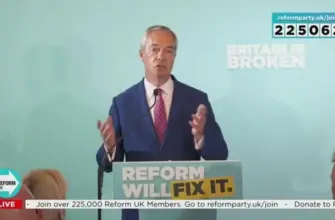With the federal election campaign intensifying, both Labor and the Coalition have unveiled a series of proposals designed to sway voters, marking a significant departure from the comparatively restrained approach taken in 2022. The distinctions between their platforms are now markedly pronounced, offering voters a clearer picture of their contrasting visions for Australia’s future.
**Housing: A Central Battleground**
The housing crisis dominates much of the debate, with both parties prioritizing solutions, though economists largely agree that policy interventions will likely exacerbate demand and inflate prices.
* **Labor:** Aims to unlock homeownership through a 5% deposit requirement for first-time buyers, supported by a $10 billion fund for 100,000 new properties. They’ve also maintained the ban on foreign investors purchasing existing homes for two years and continue initiatives from their current term – including the Housing Australia Future Fund, the Help to Buy scheme, and the National Housing Accord targeting 1.2 million homes by mid-2029.
* **Coalition:** Promises a tax deduction of up to $650,000 on mortgage interest for new home buyers, allows withdrawals of up to $50,000 from superannuation for a deposit, and allocates $5 billion for infrastructure improvements supporting 500,000 homes. They also maintain the ban on foreign investors purchasing existing homes for two years, scrap the Housing Australia Future Fund, and reduce migration intake by 25 percent.
**Tax and Cost of Living Relief**
Contrasting approaches to tax relief have become a key point of contention between the parties.
* **Labor:** Introduced a “modest” $5 weekly tax cut (increasing to $10 the following year), coupled with an automatic $1,000 deduction for all workers – eliminating the need for individual receipts.
* **Coalition:** Plans to repeal Labor’s tax cuts and introduce a temporary fuel excise reduction of one year, alongside a $1,200 tax offset for low-to-middle income earners earning under $144,000 (valid only for the 2025-26 financial year).
**Energy & Climate: A Fundamental Divide**
The most significant policy divergence lies in energy and climate strategy.
* **Labor:** Committed to extending energy bill rebates from the 2024 budget for six months, aiming for 82% of Australia’s electricity to come from solar and wind by 2030, with gas providing “firming” supply. They’ve announced a $2.3 billion fund to reduce battery storage costs by 30%, along with existing emissions reduction targets of 43% by 2030 and net-zero by 2050 – without committing to a 2035 target.
* **Coalition:** Plans to construct seven nuclear reactors across the country, slated for operation in the 2040s (estimated cost: $331 billion, though reliant on lower energy demand), ramp up gas production with a $1 billion infrastructure fund, introduce an east coast gas reservation and fast-track approval for the North West Shelf expansion. They maintain net-zero by 2050, but have not established specific emissions reduction targets. They also intend to repeal the New Vehicle Efficiency Standard.
**Healthcare: Targeting Medicare**
Both parties are heavily emphasizing healthcare, particularly Medicare, with Labor seeking to leverage this during the campaign.
* **Labor:** Announced an $8.5 billion Medicare boost to increase bulk billing rates and reduce medicine costs (PBS from $31.60 to $25), alongside $644 million for new urgent care clinics and $1 billion for mental health facilities and worker training.
* **Coalition:** Primarily mirrors Labor’s healthcare promises, including the $8.5 billion Medicare funding and PBS medicine cost reduction. They are also promising $400 million for youth services and permanently reintroducing subsidised mental health sessions (up from 10 to 20).
**Other Policy Areas**
* **Education:** Labor proposes forgiving $16 billion in student debt, establishing a $1 billion fund for childcare centres and continuing fee-free TAFE places. The Coalition focuses on increasing apprenticeships by 400,000.
* **Workplace:** Labor bans non-compete clauses for workers earning under $175,000 and protects penalty rates in legislation. The Coalition aims to reduce the public service workforce by 41,000 through hiring freezes and voluntary redundancies, offers up to $20,000 tax deductions for small businesses, and intends to force public servants back to the office (though this policy was recently dropped).
* **Crime:** The Coalition announced a $750 million crime package including a child sex offender registry and an AFP strike force targeting illicit drugs.
* **Labor:** Largely refrained from commenting on the Coalition’s crime announcement, focusing instead on its own policies such as the child sexual offender registry and crackdown on illegal tobacco.
* **Coalition:** Promised to standardize knife laws, deploy detector wands nationwide in conjunction with state and territory governments, and implement a national antisemitism taskforce led by the AFP.
The election now hinges largely on which party’s approach voters deem most suitable for tackling Australia’s complex challenges—from housing affordability and cost of living pressures to energy security and climate change.







